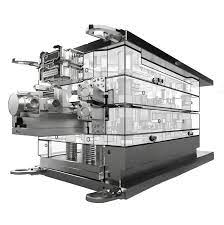Things to Understand About Personalized Injection Molding
When it is coming towards “Custom injection molding,” the first thing which hit our mind is, “What is Injection Molding Product?” The term “custom Injection Molding Design” is used to describe the process of producing plastic components tailored to the needs of individual customers.
Plastic Component Injection Molding
Pellets of plastic are melted in Injection Molding Products machine and then injected into a mold cavity under high pressure. After the process of Injection Molding near Me is complete, the finished products are expelled. The final items can be utilized independently or as parts of other items. For this purpose, you will need an injection molding machine and the appropriate tooling (also known as a mold or die). The machine of Injection Mold Supplier has a clamp unit to automatically open and shut the mold, and a heating and injection machine to heat the material and inject it into the closed mold at high pressure. High pressures are used in Injection Mold Products, and the machines are normally powered by hydraulics or, more recently, electricity. Production injection molding tooling is typically composed of steel or aluminum so that it can withstand the high pressures required. For many applications of Injection Mold Components, the economics are determined by the potentially high cost of tooling. One efficient method of producing unique components is through injection molding.
The process has failed.
The injection molding procedure consists of three primary steps. The injection machine itself, which melts and transfers the plastic, the one-of-a-kind mold, and the clamping, which applies uniform pressure. The mold is a customized device that consists of a base & a few cavities for the resin to fill. The plastic granules are melted in the injection unit, and then they are injected into the mold using a ram injector or a reciprocating screw. When making miniature components, the reciprocating screw’s capacity to inject less resin every shot comes in handy. The mold is cooled continuously after injection until the resin has reached a solidifying temperature.
Issues arising from injection molding
When careful consideration is given to the mold’s design, the Designing for Injection Molding process, and the maintenance of equipment, difficulties are rare and easily prevented. When the cycle duration is too long, the temperature gets too high, potentially burning or scorching the parts. The resin gets too hot because of this. When there are temperature differences between the mold surfaces, the components warp. The presence of moisture in the resin might also lead to this problem. Incomplete cavity filling is another issue that may arise if the injection rate is too slow and the resin has time to freeze in the mold.
Maintaining a Successful Custom Injection Molding Enterprise
The Custom Injection Molding industry is saturated with competitors, so standing out from the crowd is essential. Today’s successful custom molders tend to specialize. The molder has honed their skills over time to become an expert in molding a given product, a specific material, or a specific industry. In essence, he focused his efforts and became an expert in a certain field.


Comments
Post a Comment